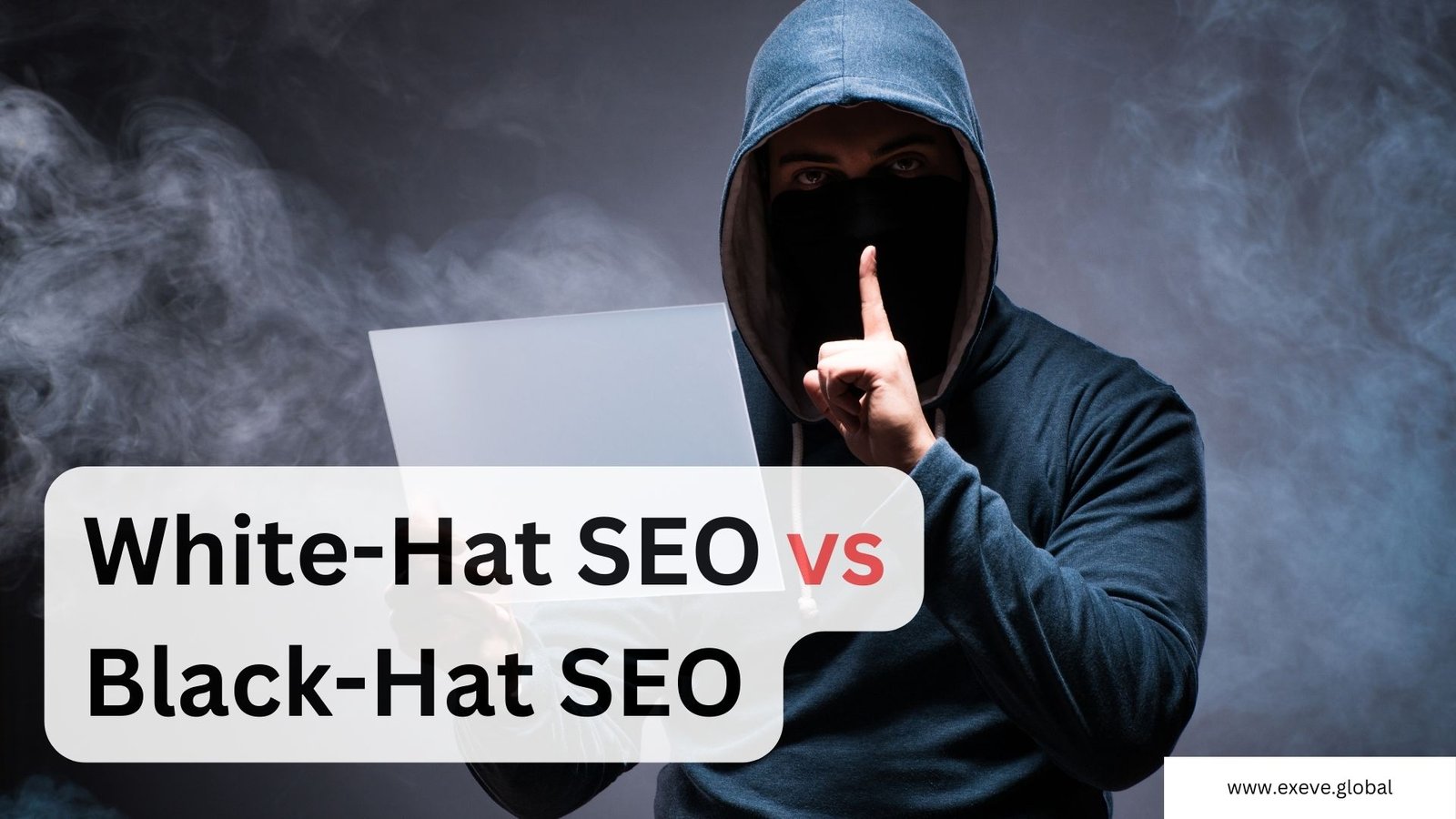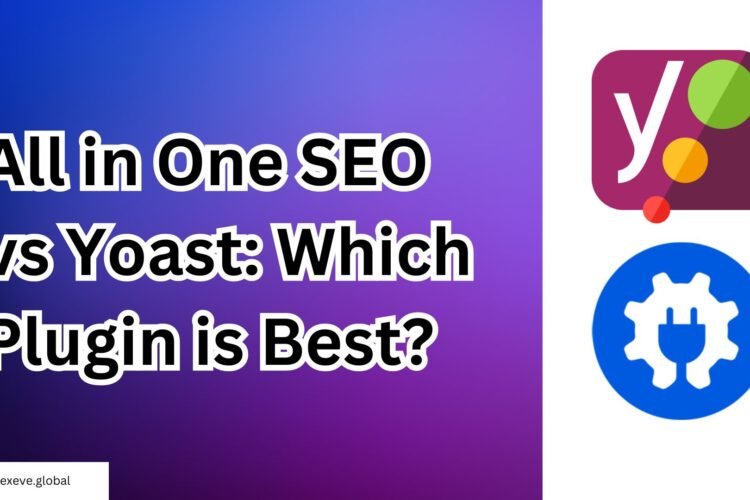
In the ever-evolving world of search engine optimization (SEO), two primary strategies emerge: White-Hat SEO and Black-Hat SEO. These approaches represent fundamentally different philosophies and techniques for improving a website’s visibility on search engines. Understanding the distinctions between these strategies is crucial for anyone looking to enhance their online presence effectively and ethically.
Overview
- White-Hat SEO focuses on sustainable, long-term results by adhering to search engine guidelines and prioritizing user experience.
- Black-Hat SEO aims for quick, short-term gains but carries significant risks, including penalties and loss of search engine rankings.
- Ethical considerations are paramount in SEO; White-Hat SEO aligns with building credibility and trust, while Black-Hat SEO can damage a brand’s reputation.
- Algorithm updates by search engines continually affect SEO strategies, making White-Hat SEO more resilient to changes compared to Black-Hat SEO.
- Choosing the right SEO strategy depends on your business goals, risk tolerance, and commitment to ethical practices.
Table of contents
- Overview
- Understanding White-Hat SEO
- Understanding Black-Hat SEO
- Origins of White-Hat and Black-Hat SEO
- Ethical Considerations in SEO
- Impact on Website Credibility
- Algorithm Updates and SEO Strategies
- Comparing White-Hat and Black-Hat SEO
- Common Black-Hat SEO Tactics to Avoid
- Long-Term Success with White-Hat SEO
- Making the Right Choice for Your Business
- Future Trends in SEO
- Conclusion
Understanding White-Hat SEO
White-Hat SEO is an ethical approach to optimizing your website for search engines. By following established guidelines and best practices, it aims to improve your site’s search engine rankings while providing a positive user experience. This approach offers long-lasting benefits, such as stable rankings, increased trust and authority, and cost-effective results. It’s a marathon; not a sprint.
Understanding Black-Hat SEO
Principles of Black-Hat SEO
Black-Hat SEO refers to unethical and manipulative practices used to deceive search engines and artificially improve a website’s search engine rankings. These techniques violate search engine guidelines and are aimed at exploiting weaknesses in algorithms to achieve quick and often short-term gains. While black hat SEO tactics may lead to rapid improvements in rankings, they come with significant risks.
Risks of Black-Hat SEO
Engaging in Black-Hat SEO is a very risky practice as search engines like Google encourage users to report websites misusing structured data. These techniques can result in severe penalties, including lower rankings, deindexing, or even banning from search engine results altogether. There’s no doubt black hat SEO techniques are risky for businesses and are not worth engaging in.
Common Black-Hat SEO Techniques
Black-Hat SEO involves providing inaccurate information in structured data to fool search engines and users. For example, someone practicing blackhat SEO might award themselves five stars from a fake review site and add structured data so they stand out on search results pages. Other common techniques include:
- Keyword stuffing
- Cloaking
- Link schemes
Black-Hat SEO tactics may yield short-term gains, but they can result in severe penalties, including lower rankings, deindexing, or even banning from search engine results altogether.
Origins of White-Hat and Black-Hat SEO

The terms ‘White Hat’ and ‘Black Hat’ actually come from old Western movies, where the good characters would typically wear white cowboy hats, and the bad guys would wear black ones. In the modern tech industry, these terms are used in reference to ‘white-hat’ or ‘black-hat’ hackers. Today, SEO experts have coined the terms White Hat and Black Hat SEO to differentiate between good and bad Search Engine Optimization practices.
Ethical Considerations in SEO
When it comes to SEO, ethical considerations play a crucial role in determining the long-term success and credibility of a website. Ethical SEO techniques involve optimizing websites using legitimate and sustainable methods. Unethical techniques, on the other hand, aim to manipulate search engine algorithms for quick gains, often at the expense of user experience and long-term viability.
User-First Approach
White-Hat SEO is not just about following rules; it’s about adopting a user-first approach. This strategy aligns with the long-term objectives of most businesses and brands that aim to build credibility and authority in their niche. By focusing on providing value to the user, White-Hat SEO ensures a sustainable online presence. In contrast, Black-Hat SEO seeks to exploit loopholes in search engine algorithms to gain higher rankings quickly, often disregarding user experience and ethical standards.
Compliance with Search Engine Guidelines
These are the rules that Google has laid out to define the proper way to optimize a site. And while they go into a bit of detail as to what an “ethical” SEO strategy looks like, they can essentially be summed up with one simple idea: Don’t be manipulative. So, in general, if you’re not attempting to manipulate rankings or otherwise deceive Google’s algorithm, you’re likely following their guidelines and using White-Hat SEO.
Long-Term vs Short-Term Gains
The key to effective SEO is all about balance. Aiming to stay in White-Hat SEO and carefully considered Grey-Hat areas is your safest route. If you adhere to search engine guidelines and focus on your user’s needs, you’re golden. Black-Hat SEO, while tempting for quick gains, can damage a brand’s reputation and credibility. Once trust is lost, it can be incredibly difficult to regain, not just with search engines but also with users.
In conclusion, the choice between White-Hat vs Black-Hat SEO should be clear for businesses and SEO professionals aiming for long-term success. Ethical SEO practices not only ensure compliance with search engine rules but also contribute to building a positive and lasting relationship with your audience.
Impact on Website Credibility
Building Trust with White-Hat SEO
White-Hat SEO emphasizes sustainable growth through high-quality content creation and ethical backlink acquisition. This approach not only aligns with search engine guidelines but also fosters trust with users. By focusing on providing value and a great user experience, websites can steadily improve their rankings and build long-term credibility.
Reputation Risks with Black-Hat SEO
Websites using Black-Hat SEO techniques are at constant risk of being penalized, which can result in a sudden loss of traffic and visibility. These tactics may yield immediate results, but they often come at the cost of long-term credibility and trust. Once a website is penalized, regaining trust with both search engines and users can be incredibly difficult.
Case Studies
Numerous case studies highlight the stark contrast between White-Hat and Black-Hat SEO strategies. For instance, websites that invest in content that caters to their audience tend to strengthen their credibility over time. In contrast, those that employ quick-fix Black-Hat tactics may see an initial spike in rankings, but the long-term results are often detrimental to their website and brand as a whole.
Algorithm Updates and SEO Strategies
How Algorithms Affect SEO
Search engine algorithms are constantly evolving, and staying updated with these changes is crucial for any seo strategy. Algorithms determine how search engines rank websites, and they can significantly impact your site’s visibility. Understanding the update and adapting your strategy accordingly can help maintain or improve your rankings.
White-Hat SEO and Algorithm Resilience
White-Hat SEO techniques are designed to align with search engine guidelines, making them more resilient to algorithm updates. These techniques include:
- Publishing high-quality content
- Improving page load times
- Enhancing user experience
- Prioritizing mobile-friendliness
These strategies not only improve your site’s ranking but also provide a better experience for your visitors.
Black-Hat SEO and Algorithm Penalties
Black-Hat SEO techniques aim to manipulate search engine algorithms for quick gains. However, these methods are risky and can lead to severe penalties. Common Black-Hat techniques include:
- Keyword stuffing
- Cloaking
- Link schemes
While these tactics might offer short-term benefits, they can result in long-term damage to your site’s credibility and ranking.
Master the art of adapting to Google algorithm updates with our comprehensive guide. Learn strategies to safeguard your rankings and site visibility.
Comparing White-Hat and Black-Hat SEO
When comparing white-hat SEO vs black-hat SEO, it’s important to understand that these practices represent opposite ends of the SEO spectrum, each with different methods, goals, and outcomes. White-hat SEO adheres to search engine guidelines and focuses on providing value to the user. It’s about building a sustainable online presence through ethical practices. Black-hat SEO, on the other hand, seeks to exploit loopholes in search engine algorithms to gain higher rankings quickly, often disregarding user experience and ethical standards.
Methods and Techniques
In on-page SEO, white-hat strategies include creating high-quality content, optimizing meta tags, and ensuring keyword relevance. Black-hat techniques might involve keyword stuffing, hidden text, and cloaking. For off-page SEO, white-hat practices focus on earning backlinks through genuine outreach and quality content, while black-hat methods might use link schemes or private blog networks (PBNs).
Goals and Outcomes
The primary goal of white-hat SEO is to build a long-term, trustworthy online presence. This approach aims for steady growth and sustainable results. Black-hat SEO, however, aims for quick wins and rapid ranking improvements, often at the expense of long-term stability. The outcomes of black-hat SEO can include penalties from search engines, which can severely impact a website’s visibility.
Which is Right for You?
Choosing between white-hat and black-hat SEO depends on your business goals and risk tolerance. If you’re looking for sustainable growth and a positive reputation, white-hat SEO is the way to go. However, if you’re willing to take significant risks for potentially quick gains, black-hat SEO might seem tempting, though it comes with substantial risks.
In the long run, adhering to white-hat SEO principles is more likely to yield consistent and reliable results, while black-hat SEO can lead to short-term gains but long-term penalties.
Below is a table of differences between Black Hat SEO and White Hat SEO:
| Aspect | White-Hat SEO | Black-Hat SEO |
|---|---|---|
| Ethical Considerations | Adheres to search engine guidelines | Exploits loopholes in search engine algorithms |
| User Experience | Focuses on providing value to the user | Often disregards user experience |
| On-Page Techniques | High-quality content, optimized meta tags | Keyword stuffing, hidden text, cloaking |
| Off-Page Techniques | Genuine outreach, quality content for backlinks | Link schemes, private blog networks (PBNs) |
| Goals | Long-term, trustworthy online presence | Quick wins, rapid ranking improvements |
| Outcomes | Steady growth, sustainable results | Potential penalties, severe impact on visibility |
Common Black-Hat SEO Tactics to Avoid
When it comes to SEO, there are certain practices that can do more harm than good. These are known as black-hat SEO tactics, and they are strategies that go against search engine guidelines in an attempt to manipulate rankings. It’s crucial to avoid these tactics if you want to maintain a healthy and credible online presence.
Keyword Stuffing
Keyword stuffing used to be a way to get your content to rank higher in search engine result pages (SERPs) by including all your chosen keywords in the content. However, this made the content virtually unreadable and low quality, so it’s no surprise that Google cracked down on it. Today, keyword stuffing is a surefire way to get your site penalized.
Cloaking
Cloaking involves showing one piece of content to users and a different piece to search engines. This deceptive practice aims to manipulate search engine rankings by presenting content that is optimized for search engines but not for users. Google and other search engines consider this a serious violation of their guidelines.
Link Schemes
Link schemes are any attempts to boost search engine ranking artificially through manipulative link-building practices. This includes buying links, exchanging links excessively, or using automated programs to create links. Google has a strict stance against link schemes and will penalize websites that engage in these practices.
Black-hat SEO refers to unethical practices used to manipulate search engine rankings. These techniques go against search engine guidelines and aim to deceive both search engines and users. While they may offer short-term gains, the long-term consequences can be severe, including penalties and a loss of credibility.
Long-Term Success with White-Hat SEO

White-Hat SEO is focused on achieving sustainable, long-term results. While it may take longer to see significant improvements in rankings, the results are more stable and less likely to be negatively impacted by future algorithm updates. This means that it will take time to see the results you want.
But on the flip side, white hat SEO also has a much more lasting impact. That’s because when you use strategies that are designed to improve your overall site experience, you can achieve steady rankings for your target keywords.
Since it involves investing in content that can generate results for years to come, and using tactics that don’t put you at risk for consequences from Google, white hat is a more long-term approach.
Making the Right Choice for Your Business
When it comes to choosing between White-Hat SEO and Black-Hat SEO, understanding your business goals and the potential risks and rewards is crucial. Both strategies have their own set of techniques and outcomes, and the right choice depends on what you aim to achieve in the long run.
Assessing Your Goals
Before diving into any SEO strategy, it’s essential to assess your business goals. Are you looking for quick wins or long-term success? The difference between black hat and white hat SEO practices lies in their approach: the black hat path courts immediate rewards with high risks, while the white hat is the slow and steady march towards genuine recognition. If your goal is to build a sustainable online presence, White-Hat SEO is the way to go. However, if you’re willing to take risks for rapid results, Black-Hat SEO might seem tempting.
Evaluating Risks and Rewards
White-Hat SEO focuses on creating high-quality content, optimizing on-page elements, and building genuine backlinks. These methods are in line with search engine guidelines and offer long-term benefits. In contrast, Black-Hat SEO techniques, such as keyword stuffing, cloaking, and link schemes, can provide quick results but come with significant risks, including penalties from search engines. In contrast to black hat strategies, white hat SEO marketing leverages methods that stay within search engine guidelines. It’s a trade-off between short-term gains and long-term stability.
Expert Opinions
Industry experts often advocate for White-Hat SEO due to its sustainable nature. They argue that while Black-Hat SEO can offer quick wins, the risks far outweigh the rewards. Search engines are continually updating their algorithms to detect and penalize Black-Hat techniques, making it a risky investment. On the other hand, White-Hat SEO builds a strong foundation for your website, enhancing its credibility and trustworthiness over time.
Choosing the right SEO strategy is not just about immediate results but about building a lasting online presence. Consider your long-term goals and the potential risks before making a decision.
Future Trends in SEO
The Role of AI in SEO
Artificial Intelligence (AI) is set to revolutionize the SEO landscape. AI algorithms can analyze vast amounts of data to identify patterns and trends, making it easier to optimize content for search engines. For instance, AI can help in keyword research, content creation, and even in predicting user behavior. AI-driven tools are becoming indispensable for SEO professionals, enabling them to make data-driven decisions and stay ahead of the competition.
Evolving Search Engine Guidelines
Search engines are constantly updating their algorithms to provide better search results. This means that SEO strategies need to be adaptable. White-Hat SEO techniques, which focus on providing value to users, are more likely to withstand these changes. On the other hand, Black-Hat SEO techniques, which try to manipulate search engine rankings, are increasingly being penalized. Staying updated with the latest guidelines is crucial for long-term success.
Predictions for White-Hat and Black-Hat SEO
For 2023 and beyond, SEO will only continue to increase in importance for all businesses, regardless of size, due to its cost-effectiveness, ability to increase visibility, and drive traffic. White-Hat SEO will continue to be the preferred strategy for sustainable growth. It focuses on ethical practices and long-term gains. Black-Hat SEO, while still in use, will face more challenges as search engines become better at detecting and penalizing manipulative tactics.
The future of SEO lies in balancing user experience with search engine requirements. Adopting White-Hat SEO practices ensures that your website remains resilient to algorithm updates and builds long-term credibility.
Conclusion
In conclusion, the choice between White-Hat SEO and Black-Hat SEO ultimately depends on your long-term goals and values. While Black-Hat SEO might offer quick wins and immediate results, it comes with significant risks, including potential penalties and damage to your site’s reputation. On the other hand, White-Hat SEO focuses on sustainable growth, ethical practices, and building a positive user experience, which aligns with the long-term objectives of most businesses. By choosing White-Hat SEO, you invest in a strategy that not only complies with search engine guidelines but also fosters trust and credibility with your audience. Remember, in the ever-evolving world of SEO, playing by the rules and prioritizing your users will always yield the best results.

